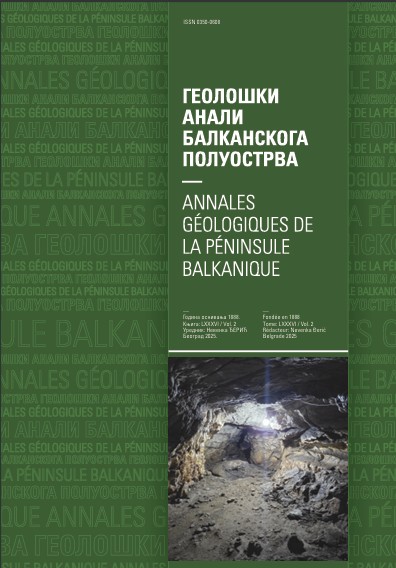The copper deposits of Bor, eastern Serbia: Geology and Origin of the Deposits
Abstract
The copper deposits of Bor, volcanic activities in the area and relationship of minerals through time are presented by formations within the Cenomanian-Turonian range. Geology and age of the deposits are given in the geological-time order based on superposition of the Timok mineral-ore Formation and the underlying (Cenomanian) and fossiliferous overlying (Senonian) strata. The concept of dating Bor deposits the Turonian is discussed in this context. Bor deposits lie between the Cenomanian Krivelj Formation and the Senonian epiclastic Metovnica Formation. Embedded between the two formations is the Timok volcanogenic Formation. Described in this paper are principal members of the Timok Formation strata: volcanogenic and subvolcanogenic- intrusive rocks, a zone of hydrothermally altered rocks and main types of the Bor ore deposits: (a) Deposits of massive sulphide coppers; (b) Vein and stockwork-disseminated type of mineralisation; (c) Porphyry mineralisation; and (d) Reworked ore-clasts of copper sulphides of the Novo Okno deposit. Identified deposits, according to the Bor Geological Service records and published works, are systematized and summarized into three geographic units: (1) Group of deposits Severozapad (Brezanik); (2) Central Bor Deposits (Tilva Roš, Čoka Dulkan, Tilva Mika, Borska Reka, and Veliki Krivelj) and many ore bodies; (3) Copper deposits Jugoistok (ore bodies X and J) and olistostrome deposit Novo Okno. Information given in this paper, the discussion on relative geologic age of the Bor deposit’s floor and roof in particular, support our concept that the process ceased before the Upper Turonian, and that age of the primary copper mineralization is Turonian.
Copyright (c) 2022 Geološki anali Balkanskoga poluostrva

This work is licensed under a Creative Commons Attribution 4.0 International License.










